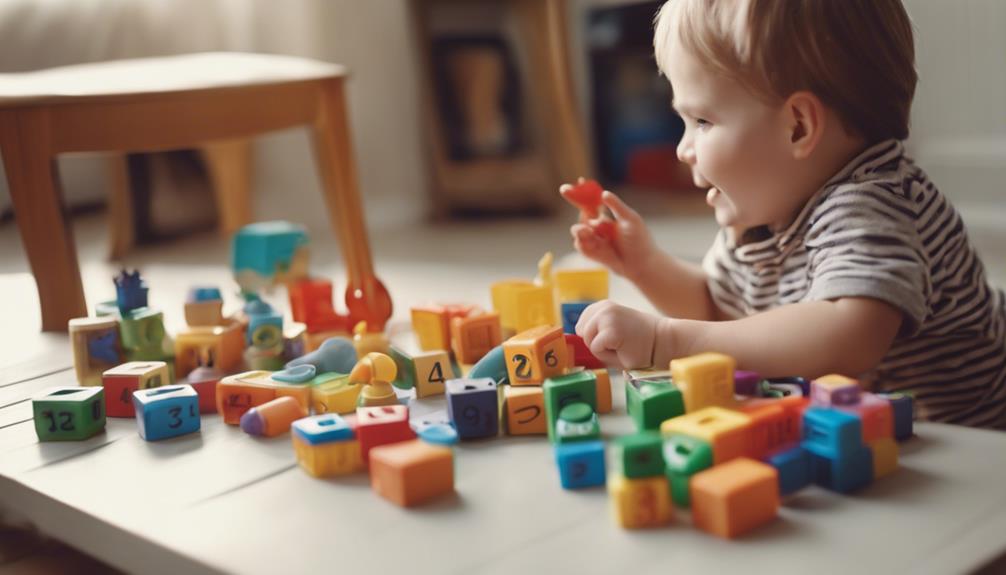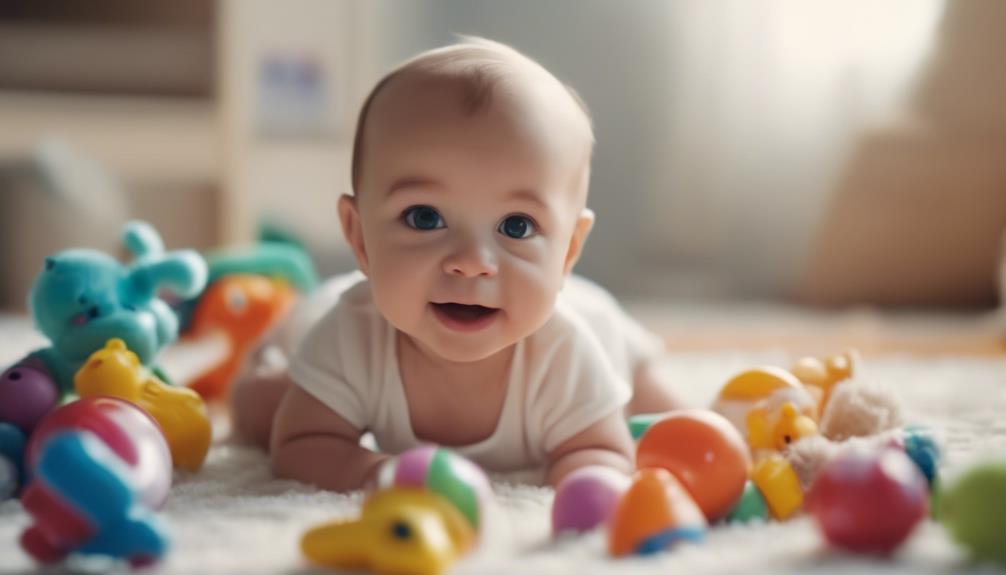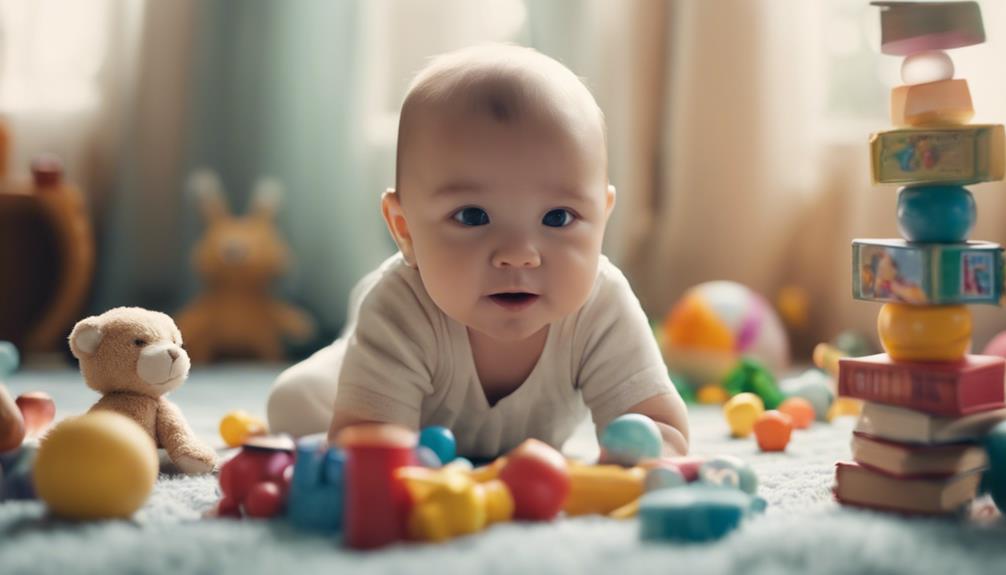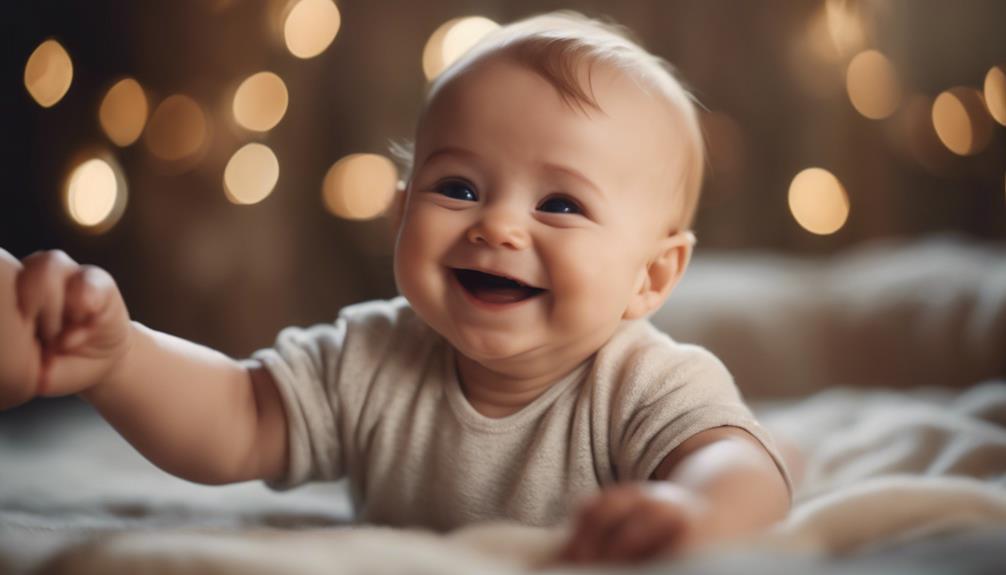To determine if your baby is happy, pay attention to their serene and relaxed appearance, their smooth body movements, and their positive responses to your face and voice. The first smile, usually appearing between 4-10 weeks, along with content facial expressions and playful interactions, are also clear indicators. Happy babies often display peaceful gazes and focused attention. Furthermore, comfortable sleep patterns suggest their overall well-being. These signals together create a reflection of your baby’s happiness. Every subtle gesture or expression exposes their emotional state, providing valuable insights into their satisfaction. Keep an eye out for these signs to comprehend your baby’s joy and fulfillment.
Key Takeaways
- Peaceful and drowsy appearance
- Smiles, coos, and playful interactions
- Focused attention and tracking objects
- Content facial expressions and positive responses
- Regular naps, secure environment, and bonding interactions
Peaceful and Drowsy Appearance
If your baby looks peaceful and drowsy, it could be a sign of contentment and satisfaction. Happy babies, even very young ones, often exhibit this behavior when they're feeling comfortable and secure. This peaceful appearance indicates that your little one is at ease and content in their environment.
As babies develop, around 4-10 weeks old, you may start to notice their first smiles emerging, which is a clear sign of happiness and emotional connection. These early smiles demonstrate their budding sense of joy and positive feelings.
When your baby displays a tranquil and drowsy demeanor, it shows that they're in a state of relaxation and well-being. This peaceful expression is a non-verbal cue that communicates their contentment and satisfaction. As you observe your baby gazing at you with a serene look, remember that this is a sign of happiness and joy.
Pay attention to these subtle cues to understand your baby's emotions and make sure they feel secure and loved.
Relaxed Body Movements
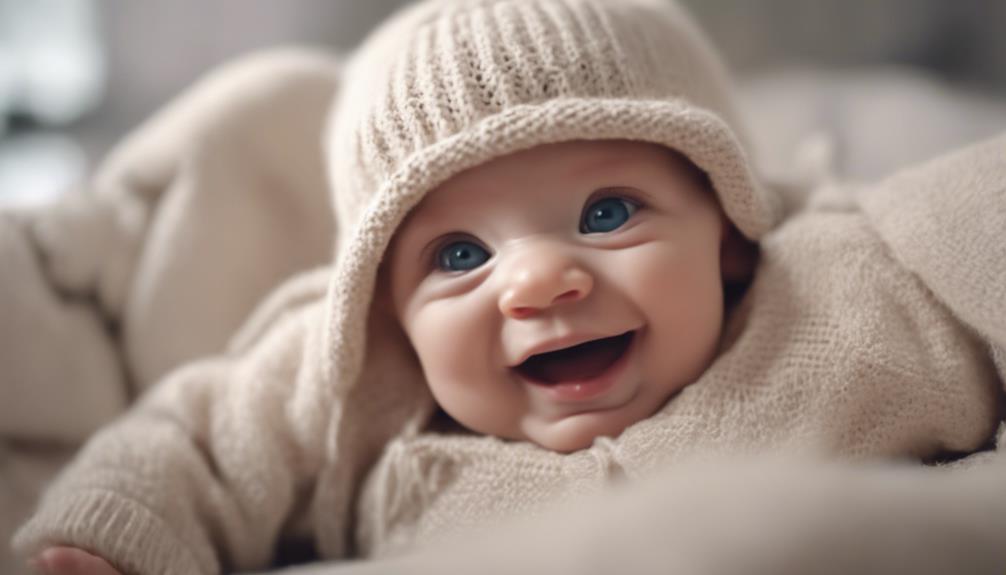
Look for your baby's relaxed body movements as a key indicator of their happiness and contentment. When your infant expresses positive emotions, their body language can be a powerful tool to communicate their feelings.
A contented baby often shows signs of comfort and relaxation through their posture and movements. Observing your baby's calm and peaceful demeanor can reassure you of their well-being. Infants may exhibit drowsiness and a sense of ease, reflecting their inner contentment.
Pay attention to the subtle cues in their body language, such as gentle swaying or relaxed limbs, as these can be reassuring signs of their happiness. Remember, relaxed body movements in your baby aren't just random actions; they're meaningful ways through which your little one conveys their emotions.
Positive Responses to Face and Voice

When your baby responds to your face and voice with smiles and laughter, it's a heartwarming sign of their happiness.
These positive reactions often manifest as sweet coos and babbles, reinforcing the strong bond between you and your little one.
Paying attention to these cues can help you understand and nurture your baby's emotional well-being.
Smiles and Laughter
Most newborn babies typically display contentment through relaxed body movements and peaceful gazes, indicating happiness.
When it comes to smiles and laughter, these are also key indicators of your baby's joy and contentment.
Here's what to look for:
- Start Smiling: The first genuine smile from a baby usually appears between 4-10 weeks old. This is a good sign that your little one is feeling happy and content.
- Positive Responses to Face and Voice: Babies often show their happiness through positive responses to a caregiver's face and voice. Things like eye contact and smiles demonstrate their satisfaction.
- Baby Laughter: Around 3 months old, you may notice your baby starting to laugh. This clear sign of joy and happiness is heartwarming for any parent to witness.
Observing these signs of smiles and laughter in your baby can bring you closer to understanding their emotions and overall well-being.
Coos and Babbles
Positive responses to your face and voice are early indicators of your baby's happiness and contentment. When your baby hears your voice or sees your face, their coos and babbles can signify joy and comfort. These vocalizations are a way for your baby to engage with you and express their happiness.
Pay close attention to their coos and babbles, as they can reveal a lot about how your baby is feeling. Facial expressions often accompany these sounds, further reinforcing the positive response your baby is having to your interaction. Encouraging your baby's vocalizations through back-and-forth communication can't only enhance their happiness but also promote their social development.
First Smile (4-10 Weeks)

Between 4-10 weeks of age, your baby may grace you with their first smile, a heartwarming milestone that reflects their happiness and well-being.
This early smiling pattern serves as a contentment cue, indicating their growing emotional connection and social engagement behaviors.
As you interact with your little one through cuddles and play, keep an eye out for this significant moment that signifies joy and connection.
Early Smiling Patterns
During the first 4-10 weeks of your baby's life, you may notice the beginnings of their early smiling patterns. These smiles are key indicators of your baby's happiness and emotional well-being.
Here's what to observe:
- Baby Looks: Your baby may start to fix their gaze on familiar faces, showing interest and recognition.
- Smile in Response: When you interact with your baby by talking or making faces, they might respond with a heartwarming smile.
- Facial Expressions: Pay attention to subtle changes in your baby's facial expressions, as they may start to display joy through their smiles.
These initial smiles, often triggered by familiar voices and interactions, are significant milestones in your baby's emotional development. By recognizing and understanding these early smiling patterns, you can strengthen your bond with your little one and make sure they feel loved and secure in their environment.
Social Engagement Behaviors
By around 4-10 weeks old, your baby typically experiences their first genuine smile, marking an important step in their social engagement behaviors. This initial smile signifies your baby's capacity to express positive emotions and their response to something, often a familiar face or voice.
The first smile is a significant milestone in your baby's development, demonstrating their ability to engage with caregivers and showing emotional connections. It's during this time that your baby begins to exhibit social behaviors, such as smiling in response to interactions and stimuli in their environment.
As you observe your baby's facial expressions and reactions, pay close attention to their smiles as they provide valuable insights into your baby's happiness and emotional state. While the timing of the first smile can vary, it commonly occurs within the first couple of months as your baby becomes more responsive and interactive, enhancing their social engagement skills.
Contentment Cues
Your baby's first genuine smile, typically emerging between 4-10 weeks old, serves as a clear indicator of their happiness and contentment. When looking for contentment cues in your happy newborn baby, observe for the following signs:
- Relaxed Body Movements: A content baby often displays relaxed body language, showing comfort and satisfaction.
- Peaceful Gazing: Happy newborns may engage in peaceful gazing, indicating a sense of calm and contentment.
- Positive Responses to Your Face and Voice: Your baby's positive reactions to your presence, such as smiling and cooing, can signify their happiness.
Recognizing these contentment cues is essential in understanding your baby's emotions and ensuring their well-being. If you notice your baby appearing drowsy yet peaceful, with a relaxed demeanor and responsive behavior towards you, they're likely experiencing contentment and happiness.
Peaceful Gazes
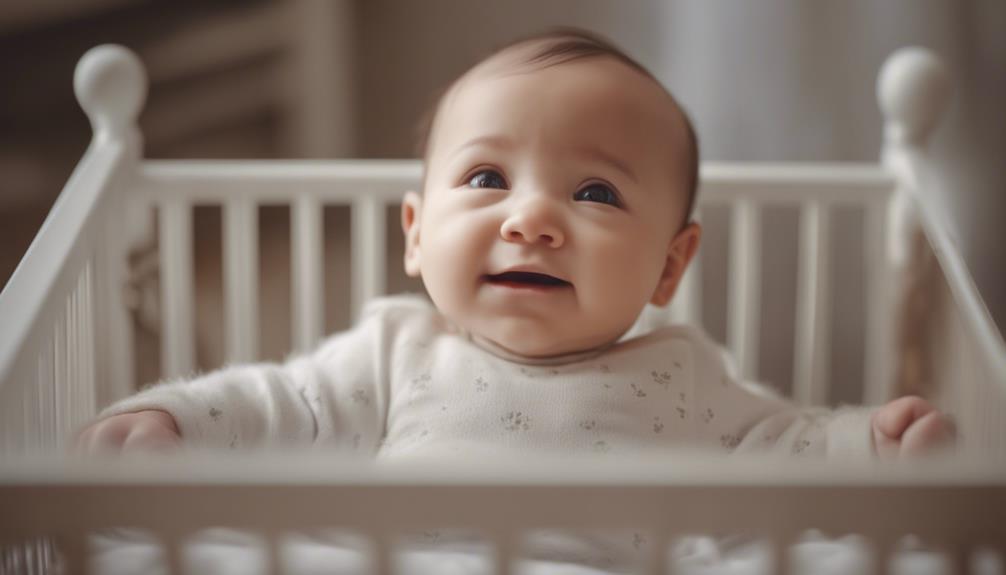
Babies express contentment and happiness through their serene gazes. When your little one looks at you with peaceful eyes, it's a clear sign that your baby is happy and feels secure in your presence. Peaceful gazes indicate a sense of satisfaction and comfort in newborns, reflecting their positive emotional state and connection with you. A baby's relaxed body movements often accompany these peaceful looks, emphasizing the overall contentment they are experiencing.
To help you recognize these peaceful gazes and understand their significance, refer to the table below:
| Signs of Peaceful Gazes | Interpretation |
|---|---|
| Direct eye contact | Strong emotional connection |
| Slow blinking | Calmness and relaxation |
| Soft, unfocused gaze | Feeling content and at ease |
Focused Attention

When your baby displays focused attention, they'll actively engage with their surroundings by making eye contact and following movements with interest. This behavior is a clear indicator of their happiness and contentment. Here are some key signs to look for:
- Tracking Objects: Your baby may track objects or people with their gaze, showing engagement and enjoyment.
- Positive Body Language: A happy baby will exhibit positive body language such as smiling, cooing, and displaying excitement during interactions.
- Interest in Interaction: Focused attention can be observed when your baby shows interest in playing, exploring, or interacting with caregivers.
Content Facial Expressions

During moments of contentment, newborn babies often exhibit peaceful and drowsy facial expressions, reflecting their inner happiness. These relaxed facial features, like a soft gaze or a slight smile, can be subtle yet profound indicators of your baby's emotional state.
Even though they may not be able to convey their feelings through words, their expressions speak volumes. Recognizing and understanding these content facial cues helps you connect with your little one on a deeper level.
When your baby's face appears serene and tranquil, it shows that they're at ease and feeling content in their environment. Observing these peaceful expressions can reassure you that your baby is experiencing moments of joy and comfort.
These content facial expressions, combined with other signs of happiness like relaxed body movements and positive responses to stimuli, contribute to a holistic understanding of your baby's emotional well-being. Paying attention to these subtle cues helps you respond to your baby's needs and nurture a strong emotional bond with them.
Playful Interactions
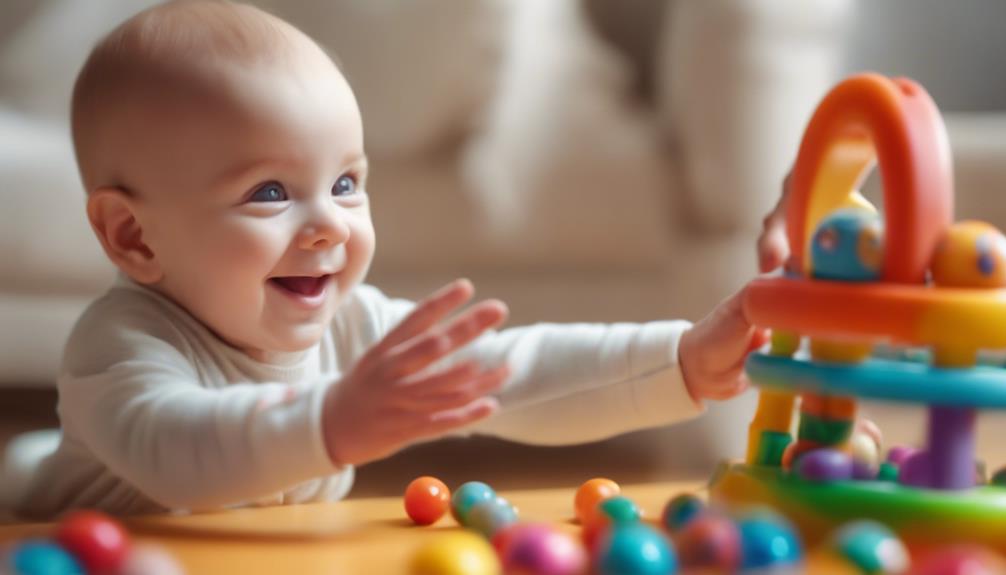
Engaging in playful interactions with your baby can reveal their happiness through joyful responses and positive reactions. When you start playing with your baby, watch for these signs to see if your little one is a happy baby:
- Smiling: Babies often start smiling during playful interactions, showing their delight and contentment.
- Laughing: Happy babies may burst into giggles when engaged in games, songs, or silly activities with you.
- Eye Contact: Maintaining eye contact and seeing your baby's happy gaze back can indicate their enjoyment and happiness during play.
These playful moments not only strengthen the bond between you and your baby but also provide essential cues about your baby's emotional well-being.
As you observe your baby's excited vocalizations, enthusiastic movements, and positive reactions to your playful gestures, you can better understand and nurture their happiness.
Comfortable Sleep Patterns

To gauge your baby's happiness, pay attention to their sleep patterns, as comfortable rest can greatly impact their overall well-being.
Starting from when your baby is around six weeks old, observing how they sleep can give you valuable insights into their contentment. Babies with comfortable sleep patterns tend to wake up refreshed and alert, showing signs of being well-rested and peaceful during their slumber.
Regular naps and restful night sleep are vital for a baby's happiness, contributing to their overall mood and development. Establishing consistent bedtime routines and creating a soothing sleep environment can further promote your baby's well-being and happiness.
Pay attention to how easily and peacefully your baby falls asleep, as this can be an indicator of their level of contentment. By prioritizing your baby's comfort during sleep, you can help nurture a happy and healthy little one.
Frequently Asked Questions
How to Tell if a Baby Is Happy?
To tell if a baby is happy, watch for peacefulness, smiles, and responsiveness. Look for relaxed movements, eye contact, and cooing. Pay attention to their overall demeanor and reactions to gauge their happiness levels accurately.
What Determines a Happy Baby?
You determine a happy baby by their peaceful demeanor, genuine smiles, and positive responses to you. Their contentment shines through relaxed movements and comforting gazes. Recognizing these signs helps you nurture your baby's happiness.
How Do I Know if My Baby Is Satisfied?
To know if your baby is satisfied, watch for peacefulness, contentment, and positive responses to your presence. Look for signs like gazing at you, reacting to your voice, and relaxed body language.
What Is One of the Best Signs of Good Health in a Baby?
One of the best signs of good health in a baby is their peaceful and drowsy demeanor. When your newborn appears content and relaxed, it's a strong indicator that they are thriving and happy.
Conclusion
To sum up, if your baby exhibits these signs of happiness, you can rest assured that they're truly content and thriving.
From peaceful gazes to playful interactions, the joy radiating from your little one is unmistakable.
So, keep an eye out for these cues and enjoy the precious moments of bliss with your happy baby.


